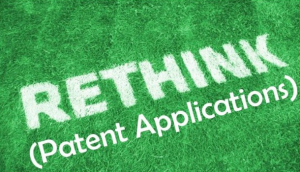Introduction
As someone who works with a wide variety of startups and small companies as the in-house expert interfacing between outside patent lawyers, I have found it helpful to compare and contrast the various legal practice styles encountered, at least because I strive to continuously improve the IP strategy consulting services that I provide my clients. Recently, I have noted that there often appears to be a profound lack of alignment between the desired outcomes that my clients seek from their patent efforts and the business models of many of the lawyers we encounter.

These lawyers seek to engage clients like mine,







 Last week, an en banc Federal Circuit (that is, the majority of the sitting judges, not just the usual three judge panel),
Last week, an en banc Federal Circuit (that is, the majority of the sitting judges, not just the usual three judge panel),